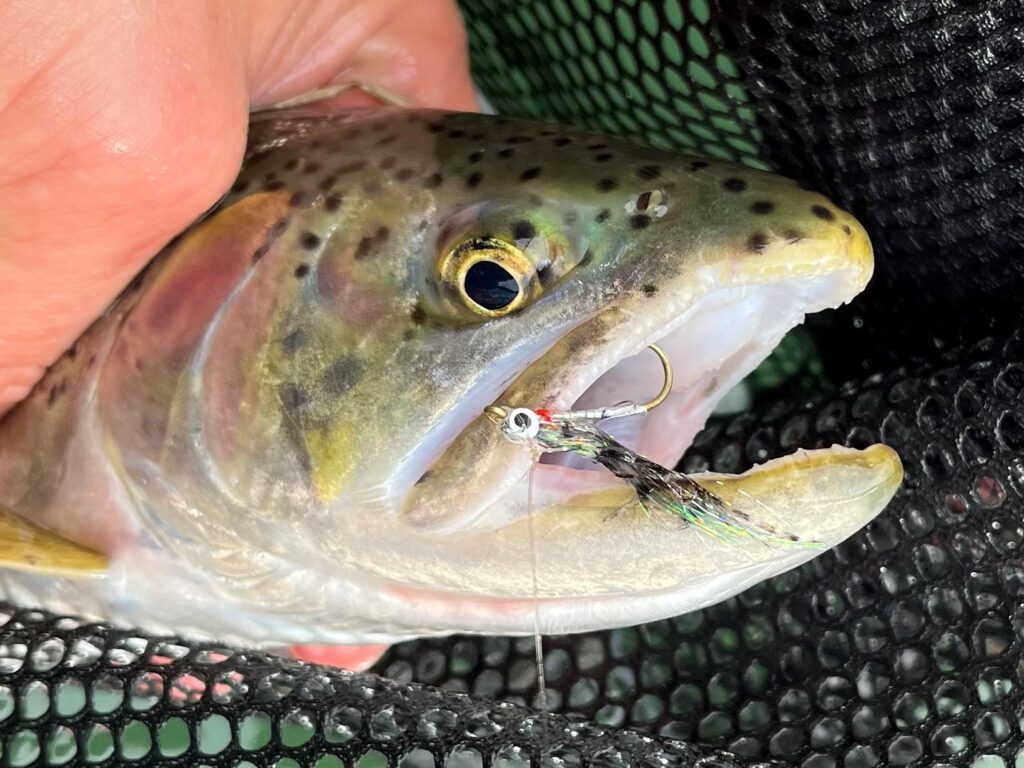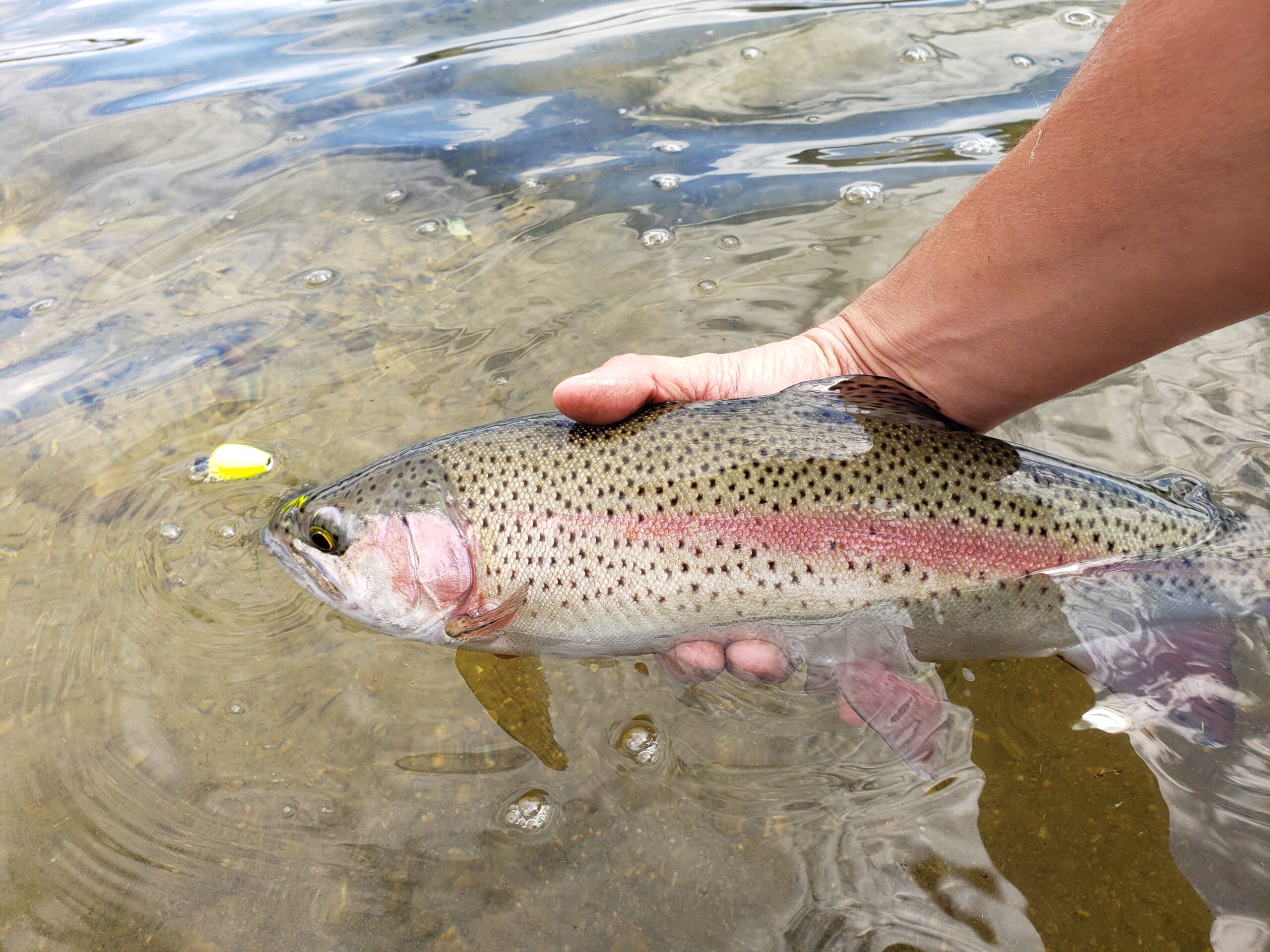As the days become longer and warmer, anglers suddenly have access to a wide variety of fishing around the Lower Mainland and Fraser Valley. With rising river temperatures, winter steelhead become more active, and will move greater distances to aggressively attack lures. Resident stream-dwelling trout and char prey heavily on salmon fry on their seaward migrations, while lakes come alive with trout and kokanee gorging on the first prolific insect hatches.
Early spring is that special time of the year when anglers of all ages and levels of skill can enjoy superb fishing in both lakes and rivers. Here are my top five Lower Mainland fishing hot spots!
Before you go fishing, be sure that you have purchased your provincial non-tidal waters fishing licence. You can conveniently buy it on-line.
Kawkawa Lake’s Kokanee Fishery
Kawkawa Lake, just outside the District of Hope, is one of several lakes in Region 2 where anglers can find 25- to 35-centimetre kokanee. Kokanee are landlocked sockeye salmon, much prized for their deep red-coloured flesh and superb flavour. The lake is productive from opening day on March 1st until mid-summer. While fish can be caught occasionally from the floating dock at the boat launch, the lake is best fished from a boat.

Kokanee are soft biters, so the more sensitive your setup is, the more likely you will catch one. Ideal setups are an ultra-light spinning rod or a 3/4-weight fly-fishing rod. A size 6 hook baited with krill, cooked deli shrimp, or single salmon eggs works best for these delicious scrappers. Small artificial lures (like spoons and spinners) can also be effective, especially those with some pink or red.
On a sunny day, kokanee typically feed near the bottom. Anchor your boat in 10 to 15 metres of water (in this situation, a depth sounder can be very helpful). On cloudy days, fish are often active near the surface; you can either fish with bait suspended under a bobber, troll small lures, or fly-fish with chironomids (or even dry flies). Expect non-stop action if a school of fish presents itself nearby!
Chilliwack River’s Winter Steelhead Fishery
The Chilliwack River’s winter steelhead fishery starts in December, but some of the best fishing usually occurs in early spring when water temperatures are slightly higher. Warmer water results in more active and stronger fish, often exemplified by fish rolling on the surface.
Steelhead eat salmon fry at times. Since fry are present in the river during April, float-drifting small spoons and spinners that resemble injured fry can goad steelhead into attacking aggressively.
Although April is the tail end of the season, it is also when the success rate for catching steelhead is highest. In the lower section of the river, downstream from the Vedder Crossing, anglers can still find strong, silver-bright steelhead freshly arrived from the sea.
Please remember that in addition to your freshwater fishing licence, you must purchase a steelhead conservation surcharge stamp. As well, you can only keep only two adipose fin-clipped hatchery steelhead per day. There are other regulations for this river, so make sure to read the Region 2 regulations before heading out.
Green Timbers Lake’s Catchable Rainbow Trout Fishery
In March, the Fraser Valley Trout Hatchery begins its releases of rainbow trout at Lower Mainland lakes in the Freshwater Fisheries Society of BC’s “Fishing in the City” program. With improving weather, the program is very popular with families and new anglers. Green Timbers is conveniently located in the heart of Surrey, and one of the program’s most highly utilized lakes. Despite being known as an urban lake, its actual location is within a quiet, forested park.
The Freshwater Fisheries Society of BC releases thousands of catchable-sized rainbow trout into Green Timbers Lake each spring. Between now and fall, you can expect excellent fishing for rainbow trout with an average weight of 250 grams.
With the exception of the western side, there is good access to shore-fishing along the rest of Green Timbers’ lakefront. Either using bait (on the bottom, or suspended below a fishing bobber) or casting and retrieving small artificial lures, the southern end of the lake is often the most productive for spin-fishers. The eastern side of the lake is better suited for fly-casting, since it offers adequate clearance for backcasts.
Be aware of a couple of rules when fishing Green Timbers Lake. Firstly, the daily limit is two trout; and secondly, wading in this lake is not permitted.
Alta Lake’s Rainbow and Cutthroat Trout Fishery
Alta is a scenic lake in Whistler. Anglers will find good fishing when the lake is free of ice, around mid-April. Besides its abundant native rainbow trout, Alta Lake is stocked with Horne 3N cutthroat trout, which can attain lengths up to 60 centimetres. With a bait ban and a total catch-and-release fishery, Alta is perfect for anglers who are hoping to improve their fishing techniques using artificial lures or flies.

The best method to catch these feisty trout is by casting and retrieving a spoon or spinner from any of several fishing docks that project into the lake. Most of your catches will be rainbow trout up to 500 grams, but occasionally a big cutthroat trout can surprise you – be sure to hold onto your rod tightly!
When fishing from a boat, try the weed beds at the northern end of the lake, the creek mouths along the western shoreline, and the floating docks in front of private residences. All these spots have the underwater structure from which large cutthroat trout can ambush your lures. As cutthroat are piscivorous, try fly-fishing with patterns that match their prey – sticklebacks and sculpins. Leech patterns are also good. Cast your fly toward the structure in which cutties often hide, and then slowly strip your line in to goad them into striking. As well, be sure to cover shallow parts of the lake, where these fish often seek their prey.
Fraser Valley’s Cutthroat Trout Fishery
Anadromous cutthroat trout can be found in the Lower Fraser River, among its many sloughs, and in its tributary rivers and small streams. Between March and May, searun cutthroat are highly migratory hunters that will aggressively pursue salmon fry. To find cutthroat, just look for frantic juvenile salmon soon after they emerge from their redds and are pushed into the shallows by schools of marauding cutthroat trout.
Spots where you are likely to find anadromous cutthroat trout in the Fraser Valley include the backwaters of the Fraser River between Chilliwack and Hope, Maria Slough, the Harrison River, Nicomen Slough, and the Stave River. There is not one single most productive spot in this fishery, though, because these fish are constantly moving. As success at any particular spot can quickly change from one day to the next, your best strategy is to visit several potential spots during your outing, and hope to intercept a feeding school.
Most anadromous cutthroat trout are between 30 and 40 centimetres long, with the occasionally trophy over 50 centimetres. A light spinning outfit, or a 4-weight fly-fishing rod setup, is suitable for catching cutthroat. Dew worms and salmon eggs are very effective baits. For some real fun, you should also try using artificial lures and flies that match what cutts are feeding on – small 1/8-ounce silver spoons or minnow fly patterns can easily do the trick when cast into a school of cutthroat trout in a feeding frenzy.
Please note that when fishing in streams and sloughs, your hook must be barbless. The daily quota of cutthroat trout in Region 2 streams is two per day, and they must be adipose fin-clipped hatchery fish. You must release any hatchery trout or char under 30 cm in length from streams.
Author: Rodney Hsu; Freshwater Fisheries Society of BC Fishing Ambassador
Photo Credit: Rodney Hsu; Freshwater Fisheries Society of BC Fishing Ambassador
